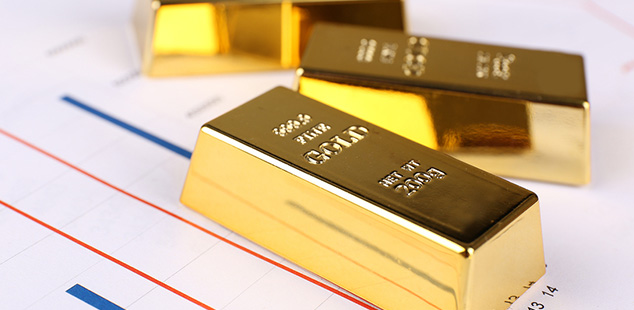
Many gold buyers have used the recent market dips in precious metal prices to dollar-cost average their holdings. At the same time, many gold investors are pleased that a number of recent events have both relieved downward pressure and increased upward movement in the price of gold.
Relief Over Fed Rates
Many gold traders point to the recent jobs numbers and Fed signals as a reason many analysts believe there is limited possibility for a near-term rise in interest rates. With the Fed more concerned about a slowing economy than the unprecedented run of low interest rates, there is little likelihood of a tighten of current monetary rates.
Institutions and companies buying gold understand the traditional close relationship of gold prices to interest rates. With a sigh of relief that U.S. Treasuries will not immediately be competing for investment dollars because of increased returns, sideline investors in gold are returning to the market. As a result, spot gold continued its rise, passing the last peak seen on August 24. Likewise, with the next expected meeting not to occur until March at the earliest, December futures also traded up.
Looking for a Breakout
Some analysts are actually seeing the potential for a breakout of the past year’s trading ranges. The market pricing and ETFs had built in a large expectation that the jobs report would be more positive and the Fed committee inclined to start moving rates back up.
According to one analyst, Taki Tsaklano of Secular Investor, “Gold is close to a major breakout [higher] or breakdown, and we favor a breakout.” He points out that his positive perspective was supported by the fact that “gold holdings of GLD ETF are steadily rising, suggesting a trend change.”
Mark O’Byrne of GoldCore out of Dublin seconded this emotion with his feeling that, “Gold may have bottomed in the summer, and could climb to as high as $1,300 an ounce by the end of this year.” Byrne goes even further in his optimistic view, projecting gold will “double in price and surpass its inflation-adjusted high of $2,500 per ounce in the next 3 to 5 years.”
How Far will It Go?
In fact, trading by the end of week 41 (October 16) supported this growing sense of a breakout, with Friday’s trading actually moving beyond recent levels of resistance before falling back slightly. Comex bullion settled around $1,188 an ounce on Thursday, and gold buyers seemed ready to up the ante.
Meanwhile, other analysts are more conservative about near-term moves, while seeing a positive longer-term perspective. According to the investment bank Macquarie, “We see gold averaging $1,075 in the fourth quarter, $1,150 in 2015 as a whole and to $1,149 next year.”
Nonetheless, these developments have gold buyers and traders talking about a movement to at least the $1,200 price point. If this does, indeed, happen, it will be a significant psychological boost for investors in gold.
It was noted by Bloomberg that last week’s movement placed gold prices above the 200-day rolling average for the first time since May. If this is the first phase of the awaited breakout, another key boost will be seeing the price of gold close on a positive for the first time in three years.

